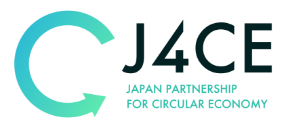
STMICROELECTRONICS K.K.
STMICROELECTRONICS K.K.
's cases
Basic values and policies for initiatives towards circular economy
ST promotes the use of sustainable raw materials by replacing critical and virgin raw materials with alternatives obtained through recycling.
Market opportunities and our strengths in circular business
Lifecycle Assessment (LCA) Approach:
ST uses the Life Cycle Assessment (LCA) approach to calculate the carbon footprint of products. This involves collecting data on physical flows (e.g., kilograms of matter, liters of water, kWh of energy) at every stage of the product's lifecycle, including incoming consumption and outgoing emissions. The data is then converted into the impact on climate change, expressed in kg CO2eq.
Circular Economy Practices:
Transitioning from a linear economy to a circular economy involves practices such as returning, repairing, reusing, and recycling products. These practices help reduce waste and extend the lifecycle of products, thereby reducing the overall carbon footprint.
Use of Sustainable Raw Materials:
By replacing critical and virgin raw materials with sustainable alternatives, such as recycled PVC and high-density polyethylene reclaimed from oceans, ST reduces the carbon footprint associated with the extraction and processing of new raw materials.
Setting indices/targets
Zero Waste and Recycling:
ST strives for zero waste by minimizing resource consumption, recycling, and implementing circular economy programs. In 2023, 96% of waste was reused, recovered, or sent for recycling, achieving the target of 95% waste reused and recycled by 2025.
Implementation system
Circularity for Precious Metals:
ST partnered with WEEECycling to recover precious metals from waste, producing pure secondary materials with the same characteristics as primary materials. This supports the principles of the EECONE project, which aims to reduce the impact of the semiconductor industry.
Circular Economy Actions:
ST promotes the reuse and use of secondary raw materials and reused components in manufactured products. This includes recycling silicon scrap for use in automotive, aeronautics, and solar panel manufacturing. The waste management process prioritizes recycling over disposal, and action plans are defined at the site level to increase the recycling rate.
Reference URL
https://www.st.com/content/st_com/en/about/sustainability/protecting-planet.html
https://sustainabilityreports.st.com/sr24/_assets/downloads/ST-Sustainability-report-2024.pdf
(see pages 38, 104, 121)

